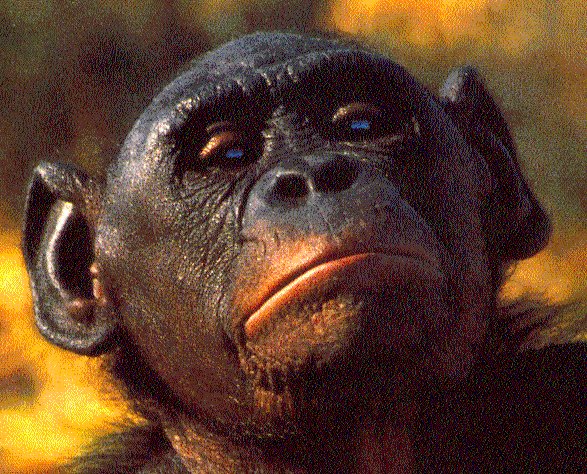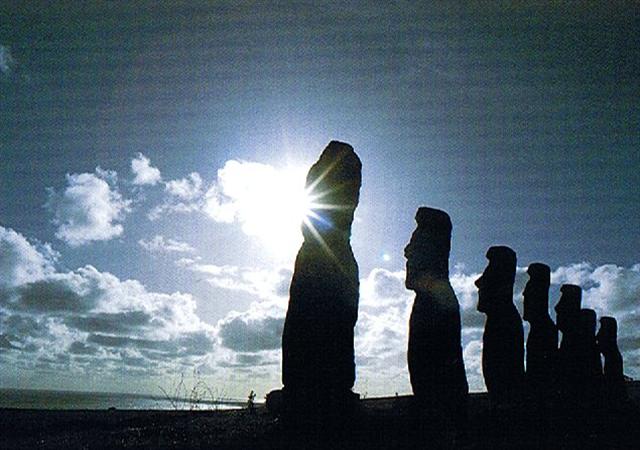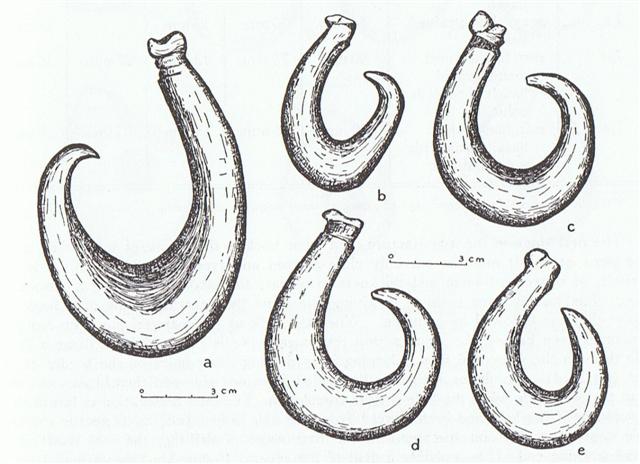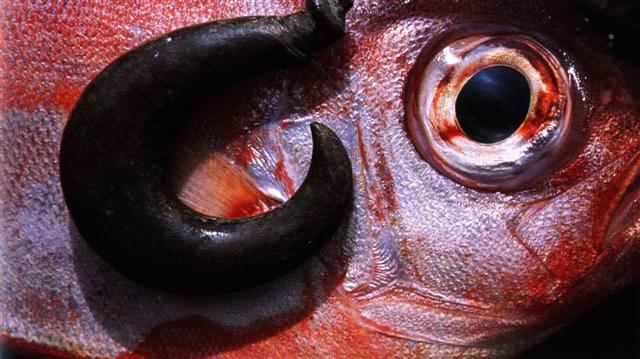I do not agree. Because just below the surface is buried the whole sacred inheritage - easy to access for those who are interested in truth, but invisible for the rest. What we name 'culture' did not originate with Homo Sapiens. For instance will we recognize the sign of 'leaving' (kua oho) from observing our close cousin: ... And then I happened to stumble on a report regarding the behaviour of chimpanzees, viz. how modern science slowly had begun to understand that they communicated not only vocally but also by signs. For instance, when the mother lifted up her foot so its underside became visible her offspring immediately understood that he should jump onto her back because it was time to move on ...
Anubis was showing he was leaving, for the Jackal was the son (incarnation) of Set (→ the setting sun).
Some other creative artisan might have shown also the underside of his foot, because beyond the horizon in the west the Underworld - where everything was upside down - was beginning. But I suggest the first part of the declaratioin of Heinrich Zimmer rings true: ... Concepts and words are symbols, just as visions, rituals, and images are; so too are the manners and customs of daily life. Through all of these a transcendental reality is mirrored. They are so many metaphors reflecting and implying something which, though thus variously expressed, is ineffable, though thus rendered multiform, remains inscrutable. However, the next part is misleading and true only if read properly: Symbols hold the mind to truth but are not themselves the truth, hence it is delusory to borrow them. Each civilization, every age, must bring forth its own ... I.e., we will understand that each culture should bring forth their own variant of the origin (tumu) - and although none of them should be taken over as truth each one is surely worthy of study because this way can we begin to perceive the common denominator. Tumu. 1. Tree trunk. 2. Ancestors: tumu matu'á, parents; tumu tupuna, grandparents. By extension: tumu taína, members of friendly families. 3. Como término muy especial se usa tumu para se¤alar a familias o personas que no son parientes, de modo que sus hijos podían, según antigua usanza, casarse entre ellos y formar un nuevo tronco. 4. Origin of something; initiator of an idea; person who is the cause of a fight: tumu taûa. 5. He-kore te tumu, to be so weakened that you cannot stand (lit.: the trunk is lacking). Vanaga. Base, cause, element, origin, principle, source, spring, trunk, occasion, author, subject, motive; ina e tumu, accidental, fortuitous; tumu kore, causeless, baseless, weak in the legs, to waver; tumu o te hakareka, toy; tumu hatihati, weak in the legs; tumu o te hiriga, purpose of the voyage. T Pau.: fakatumu, to lay a foundation. Mgv., Mq., Ta.: tumu, cause, base, origin, principle, trunk. Tumumeika (tumu - meika), banana plant. Mgv., Mq.: tumumeika, id. Churchill .The true origin in question is like a cultural string of DNA, and from such a double heliacal (diurnal) form will emerge everything else. All living creatures surely ought to be able to perceive the rays from the Sun.
Thus each branch has been brought forth from a common root. From nothing nothing will emerge (grow) and therefore also the insights of the ancients must be listened to (at nighttime). For a cycle can be measured from any of its points. The illustration in Ga2-9 - where we should read 29 (= 21 + 8) as the number for creative darkness ('fucking time', Hiro) - Hiro. 1. A deity invoked when praying for rain (meaning uncertain). 2. To twine tree fibres (hauhau, mahute) into strings or ropes. Ohirohiro, waterspout (more exactly pú ohirohiro), a column of water which rises spinning on itself. Vanaga. To spin, to twist. P Mgv.: hiro, iro, to make a cord or line in the native manner by twisting on the thigh. Mq.: fió, hió, to spin, to twist, to twine. Ta.: hiro, to twist. This differs essentially from the in-and-out movement involved in hiri 2, for here the movement is that of rolling on the axis of length, the result is that of spinning. Starting with the coir fiber, the first operation is to roll (hiro) by the palm of the hand upon the thigh, which lies coveniently exposed in the crosslegged sedentary posture, two or three threads into a cord; next to plait (hiri) three or other odd number of such cords into sennit. Hirohiro, to mix, to blend, to dissolve, to infuse, to inject, to season, to streak with several colors; hirohiro ei paatai, to salt. Hirohiroa, to mingle; hirohiroa ei vai, diluted with water. Churchill. Ta.: Hiro, to exaggerate. Ha.: hilohilo, to lengthen a speech by mentioning little circumstances, to make nice oratorial language. Churchill. Whiro 'Steals-off-and-hides'; also [in addition to the name of Mercury] the universal name for the 'dark of the Moon' or the first day of the lunar month; also the deity of sneak thieves and rascals. Makemson.
has a sign of leaving together with a 'new fruit' raised high (hua reva). And each offspring would immediately recognize it was the time to climb up (kake). ... The way of reckoning on the fingers differs in various islands. In Nengone the fingers are turned up and brought together at five. In the Banks Islands the fingers are turned down. This is often done with the spoken numerals, often without the use of words. The practice of turning down the fingers, contrary to our practice, deserves notice, as perhaps explaining why sometimes savages are reported to be unable to count above four. The European holds up one finger, which he counts, the native counts those that are down and says 'four'. Two fingers held up, the native counting those that are down, calls 'three'; and so on until the white man, holding up five fingers, gives the native none turned down to count. The native is nunplussed, and the enquirer reports that savages can not count above four ... Kake. Kakea, to come near, to embark. P Pau.: kake, to climb, to ascend. Mgv.: kake, the arrival of shoals of spawning fish. Mq.: kake, to climb up a valley. Ta.: ae, to climb, to ascend. Churchill. Mgv.: kake, to strike on an ocean reef. Ta.: ae, to strand. Churchill. Sa.: a'e, upward, to go up; sa'e, to elevate one leg, as in the act of falling in a club match; 'a'e, to ascend, to rise. To.: hake, upward, to ascend. Fu.: ake, up, to ascend; sake, ro raise the leg at one in derision or mockery; kake, to climb, to ascend. Niuē: hake, up, going up. Uvea: ake, up; kake, to go up. Ma.: ake, upward; kake, to climb, to ascend. Mq.: ake, on high, upward; kake, to ascend. Mgv.: ake, upward. Bukabuka: ake, up. Ta.: ae, up, to go up, to ascend, to climb. Ha.: ae, to raise, to lift up, to mount. Fotuna: no-jikijiake, to lift up; no-tukake, to stand upright. Nukuoro: kake, to go up. Nuguria: kake, up; hanage, northwest. Rapanui: kake a, to go abroad. Vi.: thake, upward; thaketa, to dig or lift up. Churchill 2.
... The Sirius fish-hook in the G text is a good example:
For there is another fish-hook glyph to compare with:
The inherited communicative language tools - the 'bytes' of phonemes - were implied with meaning, and they were therefore capable of self-replicating. And as if by miracle they therefore also became capable of self-repairing (up to a point). ... The 'classic' version, however, was much more detailed: the rope would seem to rise high into the skies, disappearing from view. The boy would climb the rope and be lost to view. The magician would call back his boy assistant, and, on getting no response, become furious. The magician then armed himself with a knife or sword and climbed the rope, vanishing too. An argument would be heard, and then limbs would start falling, presumably cut from the assistant by the magician. When all the parts of the body, including the torso, landed on the ground, the magician would climb down the rope. He would collect the limbs and put them in a basket, or collect the limbs in one place and cover them with a cape or blanket. Soon the boy would appear, restored ...
This fact I discovered when reading the formidable work of Ivanov and Gamkrelidze regarding the evolution of the languages up in high Kaukasus. Languages represent life and therefore they will be self-replicating and self-reparing. Lost phonemes (limbs) would later return (grow back). Or as I eventually understood it, because languages evidently are self-reparing they must correspond to some form of life. English Etymology: "Jackal ... animal of the dog kind, known as 'the lion's provider' ; fig. one who drudges for another ..." "Drudge ... work slavishly. Not certainly recorded before xvi; poss. a continuation with extended meaning of ME. drugge ... drug or pull heavily ..." "Dredge ... instrument for dragging the bed of a river ..." ... The myth goes on to tell of the blessed boat's arrival in the marshes of the Delta,
and of how Set, one night hunting the boar by the light of the full moon, discovered the sarcophagus and tore the body into fourteen pieces, which he scattered abroad; so that, once again, the goddess had a difficult task before her. She was assisted, this time, however, by her little son Horus, who had the head of a hawk, by the son of her sister Nephtys, little Anubis, who had the head of a jackal, and by Nephtys herself, the sister-bride of their wicked brother Set. Anubis, the elder of the two boys, had been conceived one very dark night, we are told, when Osiris mistook Nephtys for Isis; so that by some it is argued that the malice of Set must have been inspired not by the public virtue and good name of the noble culture hero, but by this domestic inadventure. The younger, but true son, Horus, on the other hand, had been more fortunately conceived - according to some, when Isis lay upon her dead brother in the boat, or, according to others, as she fluttered about the palace pillar in the form of a bird. The four bereaved and searching divinities, the two mothers and their two sons, were joined by a fifth, the moon-god Thoth (who appears sometimes in the form of an ibis-headed scribe, at other times in the form of a baboon), and together they found all of Osiris save his genital member, which had been swallowed by a fish. They tightly swathed the broken body in linen bandages, and when they performed over it the rites that thereafter were to be continued in Egypt in the ceremonial burial of kings, Isis fanned the corpse with her wings and Osiris revived, to become the ruler of the dead. He now sits majestically in the underworld, in the Hall of the Two Truths, assisted by forty-two assessors, one from each of the principal districts of Egypt; and there he judges the souls of the dead. These confess before him, and when their hearts have been weighed in a balance against a feather, receive, according to their lives, the reward of virtue and the punishment of sin ...
|
|||||||||||||||||||||||||||||||||||||||||||||||||||||||||||||||||||||||||||||||||||||||||||||||||||||||||||||||||||||||||||||||||||||||||||||||||||||||

.jpg)






.jpg)



.jpg)